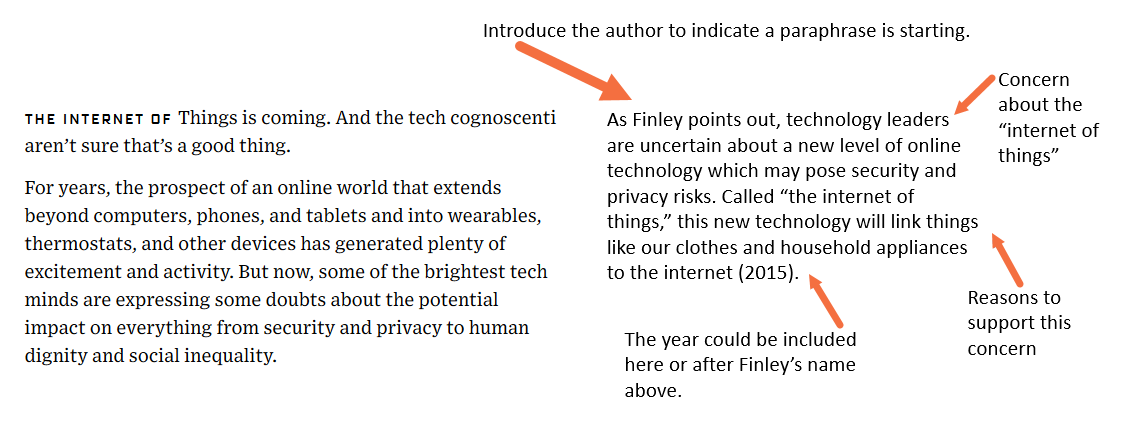Most of the time, when we want to bring ideas from our research into our essays we do so using paraphrasing. This means understanding an idea or argument in the source material and restating it in our own essay using our own words. Then, of course, indicating where the idea came from using in-text citation.
Paraphrase is the unique expression of someone else’s idea. When we bring other people’s ideas into our writing, we have two choices. Direct quotation uses the exact words from the source. Paraphrase uses none of the original words or phrasing from the source.
Paraphrasing is more efficient than using direct quotation as it lets us focus on the specific ideas we want to bring into our essay, and lets us do this in our own voice and style.
Key features of a good paraphrase:
- Uses unique vocabulary and grammatical structure. The idea from the source must be written in your own words.
- Includes language and attribution and in-text citation so we know where the idea came from.
- Quotes any unique phrasing, if necessary.
Process for paraphrase
To write effective paraphrase, we must make sure we really understand the ideas we want to restate in our own words. It helps to follow a specific process.
Let’s go through this process using an example.
For this exercise, we’ll use this passage from Finey’s 2015 article on the Internet of Things.

Finley, K. (2015). Why tech’s best minds are very worried about the Internet of things. WIRED. Retrieved 8 October 2015, from http://www.wired.com/2014/05/iot-report/

Paraphrase Evaluation Activity
Let’s complete two practice activities to evaluate strong and weak examples of paraphrase.
- Read the sample paraphrase of the passage below. List the reasons why this is not an acceptable paraphrase.

Finley, K. (2015). Why tech’s best minds are very worried about the Internet of things. WIRED. Retrieved 8 October 2015, from http://www.wired.com/2014/05/iot-report/


- In the next activity, read over the original source and the sample paraphrase. Then, identify all the types of errors that you can see in the sample paraphrase.
Original Passage from Eli Pariser’s 2011 article “The Troubling Future of Internet Search.”

Sample paraphrase:
Sometimes, if we let algorithms make decisions about what we see and get online things will be more fair. For example, computers don’t see race and gender. For this to happen, algorithms have to be designed with care and acuteness or else they reflect the culture around us. This reinforces the social norm.


